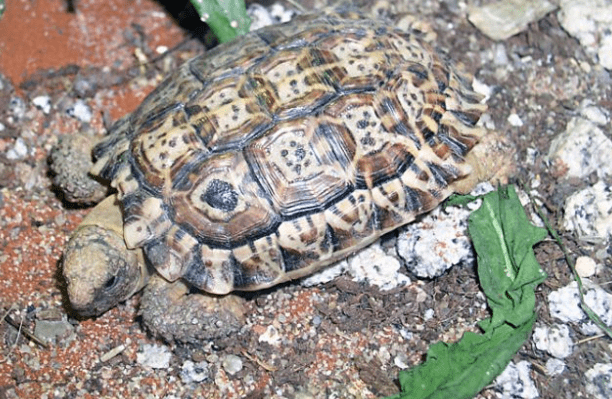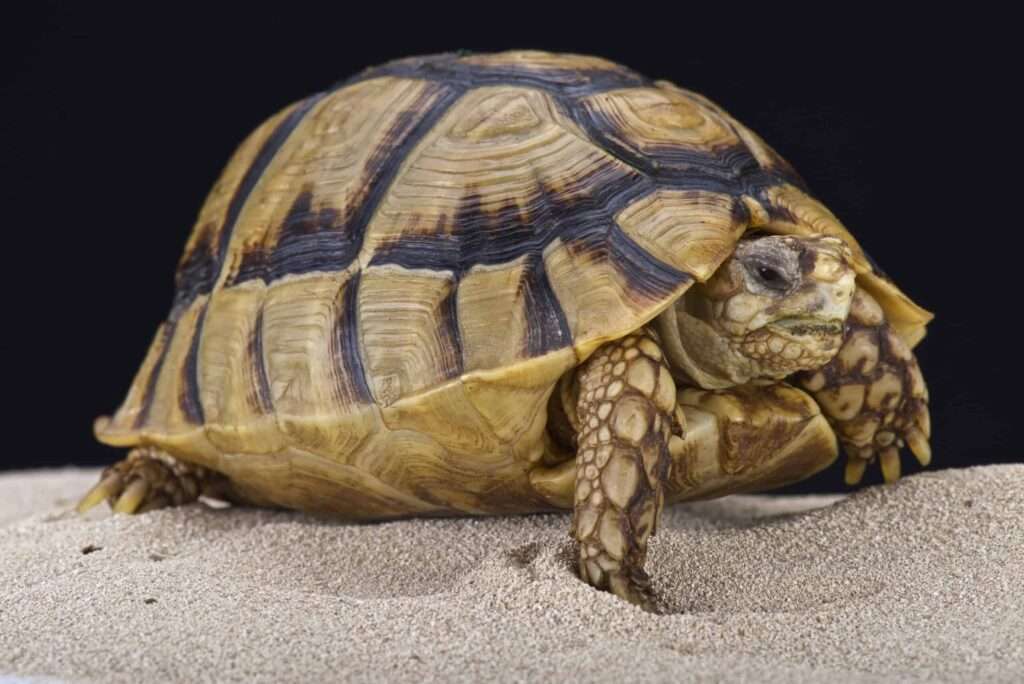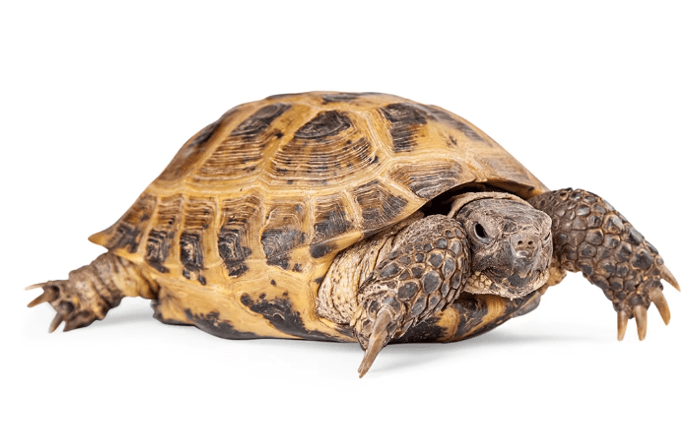
Description
One type of tortoise is the Hermann’s tortoise (Testudo hermanni). The distinctive dome-shaped yellow-orange shell of the Hermann’s tortoise features strong black markings. The eastern and western Hermann’s tortoises are the two subspecies that make up this species. Compared to the western species, the eastern species’ shell has a lower degree of domination. Age may cause these tortoises’ vibrant shells to fade. At the end of their tails, they have a nail or a huge scale.
Habitat
Southern Europe is home to the Hermann’s tortoise, including Romania, Turkey, southern France, southern and western Italy, and north-eastern Spain. Additionally, it has established a home on a number of Mediterranean islands, including the Balearics, Sardinia, Sicily, and Corsica. It currently lives on dry meadows, arid hillsides, rocky slopes, and farms even though it appears to prefer evergreen Mediterranean oak forest, which has mostly disappeared. This turtle typically stays away from damp regions and prefers habitats where it may find shade and quiet resting spots.
Behavior
Hermann’s tortoises hibernate during the winter and reawaken in late February. They are active during the day and may, if necessary, go into long periods of dormancy during the summer. They emerge from their nighttime hiding places—typically hollows surrounded by hedges or dense bushes—early in the morning to warm their bodies in the sun. Then, in search of food, they prowl the meadows of their Mediterranean habitat. They choose which plants to eat based on fragrance. When the sun becomes too hot for them about noon, they retreat to their shelters. Each population of these tortoises has a unique home range. Males typically have a range of 0.7 to 4.6 hectares, whilst females often have bigger ones ranging from 0.9 to 7.4 ha. Due to habitat degradation, the size of the home ranges may be constrained. A Hermann’s tortoise uses a variety of visual, aural, tactile, and olfactory cues to communicate. Reproduction also makes advantage of these signals.

Keeping as Pet
Housing
Keep in mind that adult Hermann’s tortoises do not adapt well to living indoors before purchasing one. Your outside climate should roughly approximate that of the Mediterranean region (Bulgaria, Greece, Italy, and Romania), as outdoor habitation is highly advised.
A shallow pan of water, preferably buried in the ground, for drinking and cooling off, rocks, small trees and plants, and a shelter to keep it safe from predators and bad weather should all be included in a tortoise’s habitat. Since these energetic tortoises tend to burrow, the pen should also be escape-proof with fence or sidewalls sunk a few feet deep.
A relatively big enclosure (at least 2 feet by 4 feet) is required if you ultimately decide to keep your tortoise indoors or bring it inside during the colder months. Pick up any visible pet waste as soon as you see it to keep the enclosure clean. Every day, replace the water pan. The substrate must be changed at least once every one to two months.
Humidity
For tortoises, humidity is not a big issue. Ambient moisture is sufficient for your tortoise as long as the humidity is at least 25% or higher (most indoor and outdoor situations are).
Food and Water
The diet of a tortoise should resemble foraging in the wild. To feed your pet, pick a range of grasses and leafy greens. Supplement greens with smaller amounts of apples, apricots, grapes, melons, peaches, and strawberries as well as cucumber, cabbage, broccoli, cauliflower, and carrots. Feed it from multiple food trays positioned throughout the enclosure once every day at the same time. You can either estimate the amount of food to feed should be roughly the size of the animal’s shell or give them as much as they will consume in 15 to 30 minutes.
In order to compensate for the lack of direct sunshine, an indoor tortoise needs nutrient boosters. Give your pet a premium tortoise meal that has extra calcium and vitamin D3. If you feed these creatures to your pet tortoise, do so sparingly. Wild tortoises also consume insects, slugs, and carrion. Given that most turtles are vegetarians, never give them dog or cat food.
Every day, its water pan should be changed, cleaned, and refilled with filtered water.
Table





